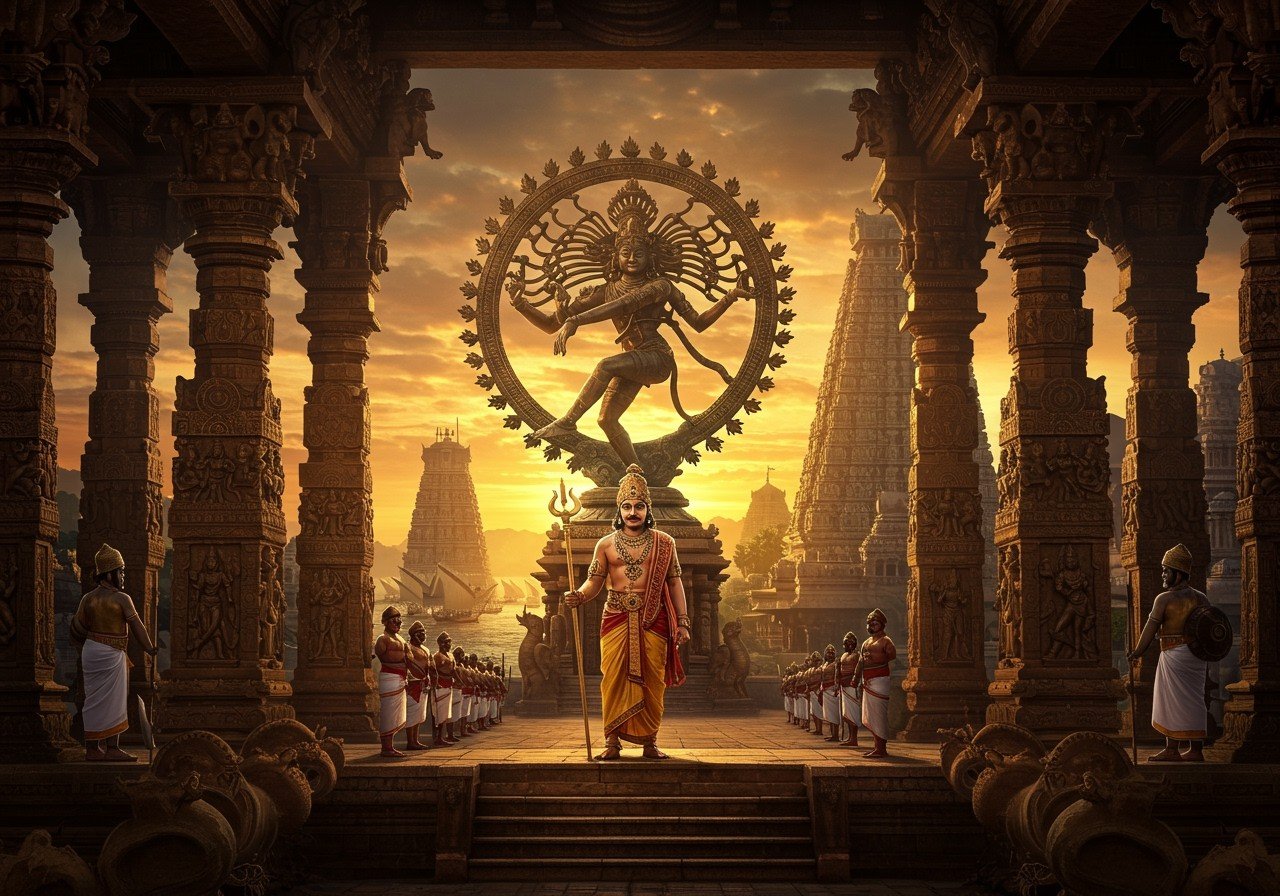
The Chola dynasty, a prominent Tamil dynasty from Southern India, reigned supreme for centuries, leaving an enduring legacy on the region’s culture, architecture, and heritage. This article delves into the comprehensive history of the Chola dynasty, from its rise in the 3rd century BCE to its eventual decline.
Origins and Rise of the Chola Empire
Emerging from the Kaveri River valley, the Cholas initially held Uraiyur (present-day Tiruchchirappalli) as their capital. Early references to the Cholas appear during the reign of Ashoka of the Maurya Empire around the 3rd century BCE. Their power solidified during the medieval period, marking their transformation from local chieftains to rulers of a vast maritime empire.
The fertile Kaveri Delta played a vital role in the Cholas’ ascent, supporting agriculture and trade. The transition from tribal governance to a structured kingdom signifies the early Cholas’ growth, documented in Sangam literature, which chronicles their rulers and achievements. The socio-political dynamics of South India during this era involved interactions with neighboring kingdoms, influencing the Cholas’ religious and cultural landscape.
Expansion and Consolidation of Power
The reign of Raja Raja Chola I (985–1014 CE) marked a significant era of military campaigns and territorial expansion. His conquests brought regions like Kerala, Sri Lanka, and parts of the eastern coast under Chola rule. His administrative reforms, including provincial governance systems, strengthened the empire’s structure.
Rajendra Chola I (1012–1044 CE) further extended the empire’s reach into Southeast Asia, encompassing the Malay Peninsula and Indonesian archipelago. The formidable Chola navy secured maritime trade routes and established overseas colonies. Magnificent temples like the Brihadisvara Temple in Thanjavur stand as testaments to the empire’s wealth and architectural prowess. Cultural exchanges during this period disseminated Indian art, literature, and religion across Southeast Asia.
Cultural and Economic Achievements
The Chola dynasty’s contributions to art, architecture, and economy are renowned. Dravidian architecture flourished, exemplified by monumental temple complexes adorned with intricate carvings and sculptures. The Cholas were patrons of literature and the arts, compiling the Tamil epic ‘Silappatikaram’ and promoting classical dance forms like Bharatanatyam.
Advancements in metallurgy during the Chola period resulted in exquisite bronze and stone sculptures. Economic prosperity stemmed from thriving agricultural practices, robust trade, and flourishing commerce. Extensive trade networks connected South India with the Middle East, China, and Southeast Asia. Local self-governance institutions, such as ‘ur’ and ‘sabha’, played a key role in efficient administration and economic management.
Decline of the Chola Empire
The decline of the Chola dynasty was precipitated by internal conflicts and external pressures. Succession disputes and internal feuds weakened the central authority of the Chola rulers. Prolonged warfare with neighboring kingdoms, including the Pandyas and Hoysalas, depleted resources and destabilized the empire.
The invasion by the Delhi Sultanate in the 13th century dealt a severe blow to the Chola military and administrative structure. Declining trade and agricultural productivity further contributed to the dynasty’s downfall. Rajendra Chola III faced insurmountable challenges in preserving the empire’s integrity.
Legacy and Continuing Influence
The legacy of the Chola dynasty continues to resonate in contemporary South Indian culture and heritage. Architectural marvels from the Chola era, such as the Brihadisvara Temple, are recognized as UNESCO World Heritage Sites. Chola temple architecture influenced subsequent South Indian temple designs and styles.
Chola art forms, including bronze sculpture and classical dance, remain integral to modern cultural practices. Chola motifs and symbolism permeate modern Indian art, literature, and cinema. Historical studies of the Cholas provide invaluable insights into the socio-political evolution of South India. Chola inscriptions and records offer glimpses into ancient Indian history. Festivals, rituals, and academic research celebrate the Chola legacy, ensuring their contributions are remembered and honored.
Experience the Spiritual Legacy of the Cholas with Poojn.in
The Chola dynasty’s profound spiritual heritage continues to inspire modern Hindu worship. Poojn.in offers a curated selection of authentic puja items to connect with this rich tradition:
- Complete Rama Puja Set: This set includes all the essential items for performing Lord Rama puja at home, allowing you to honor the sacred traditions cherished during the Chola era. Connect with the divine through this meticulously crafted set.
- Pure Copper Kalash: Essential for water rituals, the copper kalash symbolizes prosperity and the cultural richness of the Chola period. Elevate your puja experience with this beautiful and symbolic vessel.
- Authentic Brass Diyas: Similar to the temple lamps used during the Chola era, our brass diyas illuminate your sacred space with a warm, inviting glow, creating a serene atmosphere for your daily worship and special ceremonies. Experience the timeless beauty and sanctity of traditional lighting.
- Traditional Puja Thali Sets: Crafted with meticulous attention to detail, our puja thali sets help maintain the sanctity of worship practices passed down through generations. Enhance your spiritual connection with these beautifully designed thalis.
Explore our complete collection at Poojn.in and bring home a piece of India’s rich spiritual heritage.


